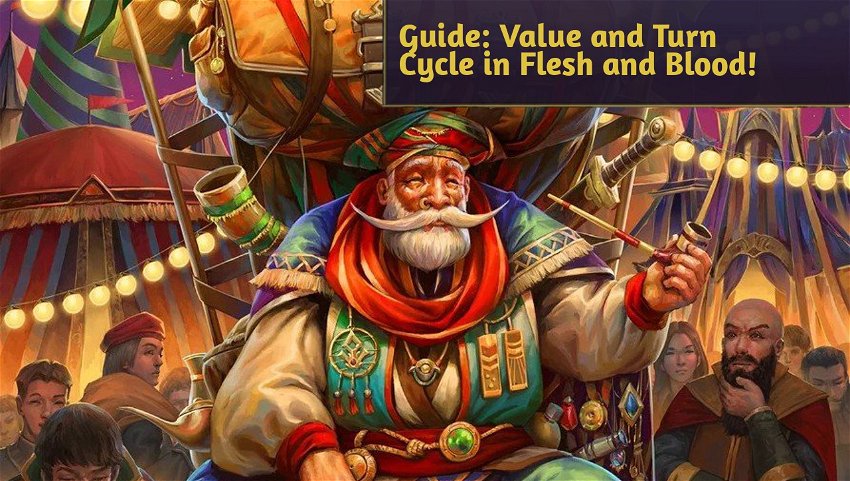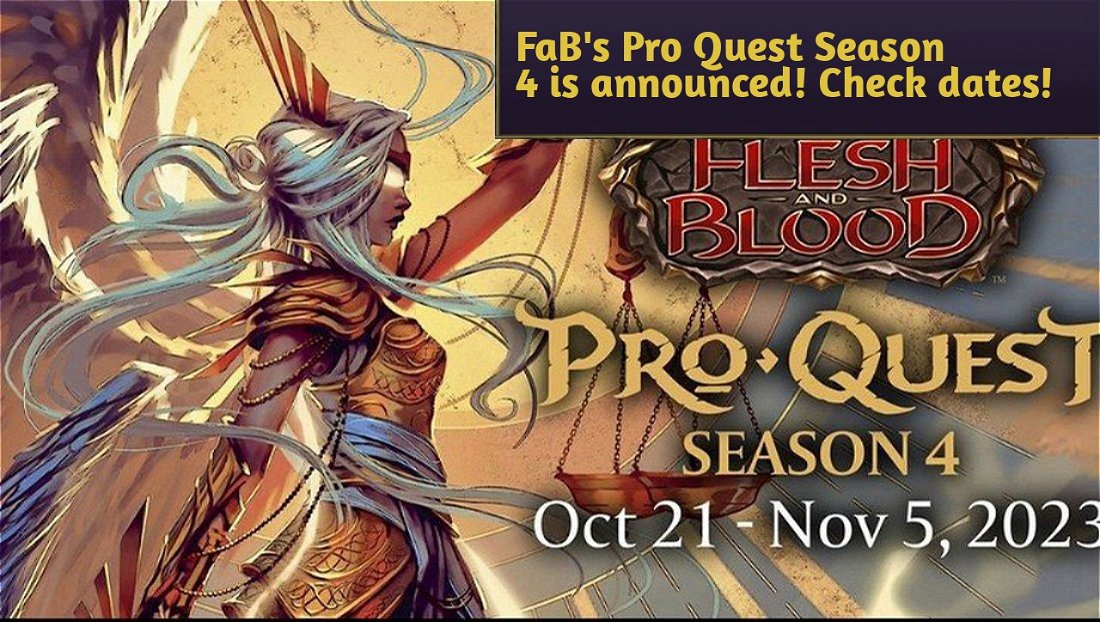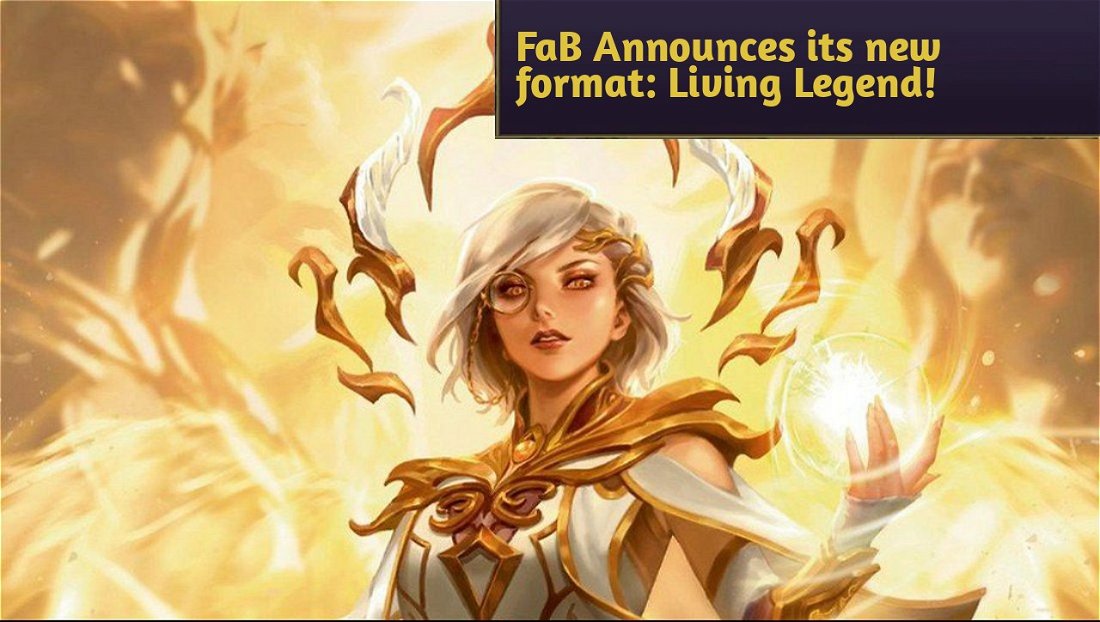Introduction
Sometimes, to win any card game match, not only a Flesh and Blood match, we depend on several factors: the cards we draw, what our opponent does right and wrong, and a little bit of luck.
However, if there are so many factors out of our control, what puts players such as Michael Hamilton, Michael Feng and Pablo Pintor always in the highest ranks in big tournaments? Could it be that they are very lucky and all those factors are always in their favor?
These factors are important, but the game isn't only about them. Our game knowledge, many times, can be reduced to our basic execution of the rules. However, there are deeper game concepts which aren't as obvious as that. Today, we'll briefly examine one of these concepts which you must dominate: the concept of value.
The Value of a Card
"Value" is a word that covers many different meanings. Here, when we talk about "value", we're referring to the quality of a card regarding what its goal is, but that concept can still be a little too broad.
To define that concept, then, the Arsenal Pass podcast introduced to us a number for each card, which is taken into consideration, so we can have a reference in terms of Flesh and Blood's game design. That equation's magic number is eight.
Eight: The Magic Number
At a basic game conception level, each card must have a value of eight. To reach that number, we must consider the following formula:
Value of the card = (Power + Defense + Pitch) - Cost
The best examples for that equation are these common cards from the first set: Wounding Blow (1), Critical Strike (1) and Brutal Assault (1).

Let's use Brutal Assault (1) as an example. It costs 2, has 6 power, 3 defense, and creates 1 resource. If we apply these numbers to our formula, we get the result of eight:
(Power (6) + Defense (3) + Pitch (1)) - Cost (2) = 8
To always have a balance in that equation, we cut some of these variables in their blue and yellow versions, because, if we only increase the pitch value without cutting any other number down, we end up breaking down that magic number of eight. In this example, blue Brutal Assault (3) has 2 extra resources for its pitch, but it has 2 less power.
However, some cards can slightly surpass this equation.

Command and Conquer is one of the (if not the) most expensive Majestic cards in the game. If we analyze its status, it is nearly identical to Brutal Assault, but it has two very important abilities. Does that mean this attack breaks the rule of eight?
Not necessarily. Command and Conquer, in a vacuum, absolutely does the same thing as Brutal Assault (1). However, in certain situations, this attack is extremely relevant, and just because these situations exist, Command and Conquer is the card it is.
The problem with that definition is that it doesn't affect anything when you're playing a game in practice, but it is important to know how it works, mostly when we're building a deck, and understand the power a card can offer, besides analyzing how balanced a new card is.
The Card's Express Value
Now, let's discuss the value of a card when you're actively playing a game. We won't look at the card from the deckbuilding or design points of view, and instead how good it is at that moment in the game.
Unlike the first method, there isn't an exact science here to determine its express value. However, I'll explain the method presented by Michael Hamilton (current World Champion) in his podcast, M-n-R.
The theory is: "The card's value is defined by how much damage it deals or how much damage it can take."
Using our cards above as examples, Brutal Assault (1) has an express value of 6 when it attacks and 3 when it defends, which encourages it to be more aggressive.
There are still certain principles in Michael Hamilton's theories, for instance:
1 - You must count the damage threatened, not the damage dealt;
2 - Don't consider excess blocking points (over-block);
3 - Each resource point is potentially equal to 1 express value;
4 - Cards which have go again or give you an action point have 1 express value.
With that in mind, to win a Flesh and Blood game, we must maximize our express value and lower our opponent's.
Let's apply all this theory to some examples and observe how each behaves in each situation.
Turn Cycle and Theory in Practice
To apply all these concepts, they must be analyzed in a Flesh and Blood's turn cycle in full. That cycle starts at our opponent's round start (when we have four cards) and ends at the end of our next turn (when we set up our arsenal and draw a new hand).
We won't analyze each class in the game, but we can analyze each archetype and give an example for how each behaves. As an example for aggressive decks, we'll use Fai, Rising Rebellion.
Value in Aggressive Decks
Our hero, then, is Fai, Rising Rebellion, our weapon is Searing Emberblade, we have two Phoenix Flame in our graveyard and our hand, after ending a turn without setting up our arsenal, is the following:

What is the highest value we can get out of our hand (disregarding our equipment)?
The first thing we should note is the number of cards with 2 defense - which is already a big encouragement that we should use our cards to attack and, due to the number of cards with go again, we can play our whole hand.
If our opponent doesn't play something very relevant on their turn, we can play the following sequence of attacks:
Ronin Renegade (1) -> Rising Resentment (1) -> Searing Emberblade (pitch Brand with Cinderclaw (3))-> Activate Fai, Rising Rebellion's ability -> Command and Conquer (pitch Phoenix Flame)
With this sequence, we present a total of 15 damage. As much as Command and Conquer can destroy our opponent's arsenal, we can't assume that will happen, so we don't take the on-hit effect's potential into account. But if this effect indeed destroyed their arsenal, the value would be even greater.
With that same hand, if all these attacks were used to block, we'd have a total of 9 defense value, which is, obviously, lower.
Now, let's consider another example with the same hero and the same conditions above, but with a terrible hand:

With that hand, it is almost impossible to attack with all these cards. There aren't any Draconic attacks which can start the combat chain, none of them have natural go again (all have a condition for that to happen) and their power is even lower than their defense, so, to maximize that hand, it is preferable that you block with most of them.
The total defense value is 11, but, as we have the weapon Searing Emberblade, we can use Snatch (3) to attack with it, adding up 9 defense plus 3 of the weapon's attack, and totaling 12 value.
Many decks get a higher value using their whole hand to attack. Katsu, the Wanderer, Dash, Inventor Extraordinaire, Lexi, Livewire, Briar, Warden of Thorns, Viserai, Rune Blood are a few examples.
Value Between Defense and Attack
However, not all classes can play their whole hand. For the classes that can't, the maximum value of a hand oscillates between attacking and blocking. Let's use Bravo, Showstopper as an example.

Our hero is, then, Bravo, Showstopper, our weapon is Anothos (disregarding other weapons), we haven't put any card in our arsenal and our hand at the beginning of the turn cycle is the following:

These cards are considerably heavier in cost and none of them have go again. As we always want to maximize our hand, we have to use our cards in the best way possible. So, we'll need to swap between blocking with some and using others to attack.
With this hand, the best value we can create is 13. We'll defend with Chokeslam (1) and 2 blue cards, and pitch another blue card to attack with Anothos. 3 times 3 defense plus 4 attack results in 13.
If we attack with Chokeslam (1), we'd need to defend with only 1 blue card and attack with the red card, this way getting 1 attack with Dominate (using the hero's ability), and 1 possible on-hit effect. However, that choice created 11 value (3 defense plus 8 attack). As we can't count with the attack's on-hit effect, that choice wasn't as optimized as the previous one.
Let's add another variable to this example. We have then, a Seismic Surge on board, and, at our round start, it is destroyed. Is the value still the same?

Thanks to Seismic Surge's effect, now our best value went from 13 to 14. We defend with 2 blue cards, and, on our turn with the token effect, we attack with Chokeslam (1) costing 3. Despite us creating only 1 more value, that 1 value can really make all the difference in the world late game.
Many heroes work with that logic. Iyslander, Stormbind, Prism, Awakener of Sol, Dorinthea, Ironsong, Levia, Shadowborn Abomination are a few examples of decks which extract their value between attack and defense.
When You Can't Play for Value
In some situations, it simply isn't possible to play according to that value logic, and the most common ones are:
1 - When we're being threatened by a lethal attack;
2 - When a card presents a condition which ends our plans;
3 - When we can't let our opponent maximize their value.
The lethal situation is the most obvious one. When any attack presents enough power to end the game, we should ignore the value logic and block as best as we can so that we don't lose instantly.
Another situation is when we need to block an attack which has any sort of disruption that can ruin our entire turn. Let's see an example:

Our hero is Dash, Inventor Extraordinaire, we start with the item Induction Chamber, our weapon is Teklo Plasma Pistol (we'll disregard our equipment), we don't have our arsenal setup, and we have cards enough in our deck for any play. We have the following hand:

With that hand, we have 15 value. We play all red attacks using Boost's ability and creating resource with High Speed Impact (3), but let's change the situation. As we're defending, the opponent does a single attack in their turn: Erase Face.

Erase Face removes our cards' class, and, as a result, if we take its damage, all our cards are no longer Mechanologists, and, consequently, Boost's ability will fail. This way, our value of 15 won't be possible anymore.
As a result, we should change our plans and block this attack, and, to obtain more value in that situation, we have to block with Zero To Sixty (1) and Zipper Hit (1), attack with Throttle (1) in our turn (pitching High Speed Impact (3)) Boosting, and, with resources to spare, attack with Teklo Plasma Pistol - totaling 14 value.
Notice that, in this example, we didn't have as much value as we could, but the circumstances made us change plans so that we could have a functional turn.

Let's examine the last example. Your opponent is playing Briar, Warden of Thorns, their weapon is Rosetta Thorn (we'll disregard equipment), and there are no cards in their arsenal.
On their turn, they played the following sequence of cards:
Bramble Spark (1) (using Fuse's ability) -> Channel Mount Heroic (creating an Embodiment of Lightning with the hero's ability and pitching 1 blue to pay for the costs) -> Snatch (1) (this way using all cards in their hand).

Finally, the opponent presents you an attack with 10 power (dealing 1 arcane damage), go again, and, if the damage goes through, they draw one card. What should you do in that situation?
So far, the opponent presented 11 value (10 from Snatch (1)'s attack with buffs more 1 arcane damage from Bramble Spark (1)), and let's assume we have the same hand as the Dash, Inventor Extraordinaire in the previous example. We have 15 value. Should we ignore the damage and let our opponent draw a card or block it fully?
Taking 1 arcane damage in this example is unavoidable, but taking the physical damage puts us in a dilemma. The card our opponent will draw might be used in one of the following situations:
1 - It will be placed in the arsenal;
2 - It will be played immediately;
3 - It will be used to pay for Rosetta Thorn's pitch.
If the card drawn is used to pay for Rosetta Thorn, values will level out (the weapon has an express value of 4, totaling 15). Now, if it is played immediately, you should consider how much you know about your opponent's deck. If we know the card can be another Snatch (1) or a Coax a Commotion, and it is used immediately, these attacks can add 7 to the equation (remember our opponent has a Channel Mount Heroic on board), this way creating a total of 18 express value and drawing another card.
If even then this card drawn isn't used neither to pay for the weapon nor just to play it straight, placing it in the arsenal creates a value delay. That means they won't be creating value now, so they can create it in a more fitting turn (for instance, if this card is a Force of Nature, and we consider there's a Channel Mount Heroic on board, they can have an unstoppable turn later).
In the best-case scenario, then, not blocking means a value equal to ours. However, in the worst-case scenario, this value can increase - which is very bad for us.
As a result, instead of maximizing our hand, we'll still follow through with this plan, but we'll also minimize our opponent's effects. Blocking with all cards in our hand, we create 10 value (remember we don't count excess blocks), but our opponent still has created 11 value on their turn. Is there any scenario in which our value is bigger?
Here we'll go into how much value equipment can create. With a piece of equipment which has defense 1 (an Ironrot Gauntlet, for instance), we can block with all red cards in this situation (totaling 9), plus one equipment (stopping all damage coming from Snatch (1)). On our turn, we can use the blue card to place counters on Induction Chamber and Teklo Plasma Pistol to threaten 4 damage with the weapon. Our cards created 13 value, but our armor's defense created enough value to prevent our opponent from creating even more value.
Equipment value is an additional subject which we won't discuss today, but that example shows how equipment is one of the most important pieces in the game.
Final Words
All we discussed here so far is just the tip of the iceberg regarding the complexity a Flesh and Blood match can present. There are other concepts, such as arsenal, tempo, equipment value, each deck's archetypes, and others. For today, let's reflect on card value alone.
An excellent way to exercise these concepts is to get your main deck (regardless of your hero), draw a hand, and find its highest value. It might be hard at first, but with time the process of finding that answer will get faster and faster.
Thank you for reading and see you later!














— commentaires 0
, Réactions 1
Soyez le premier à commenter